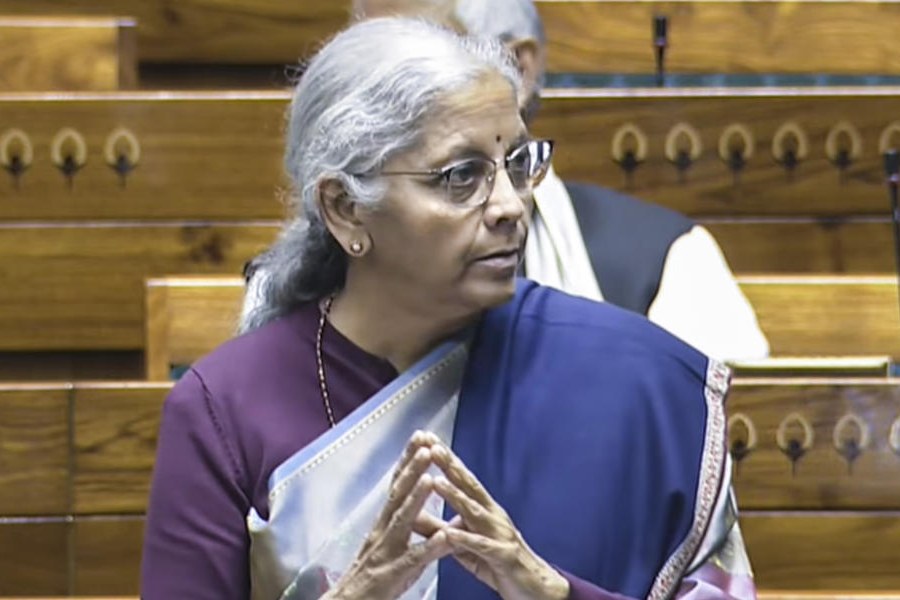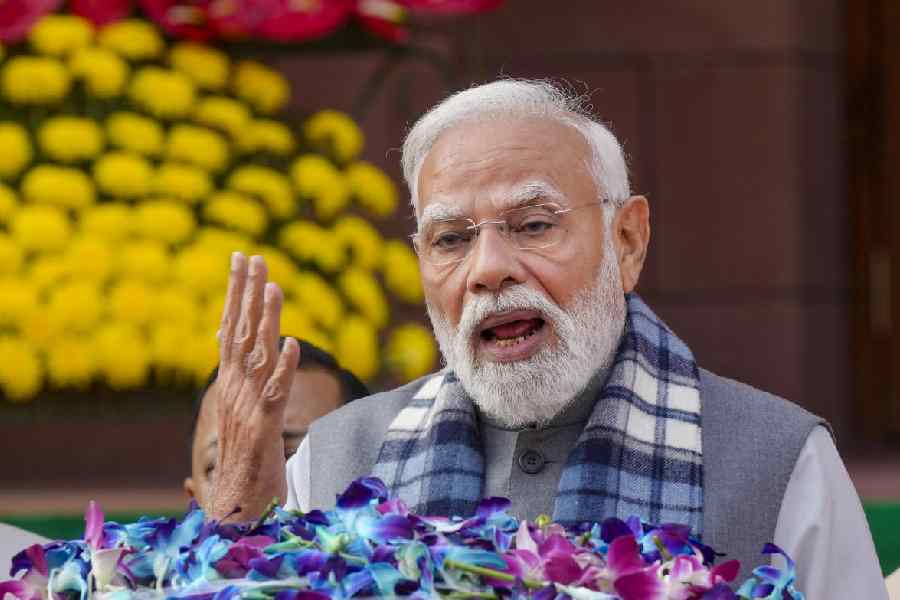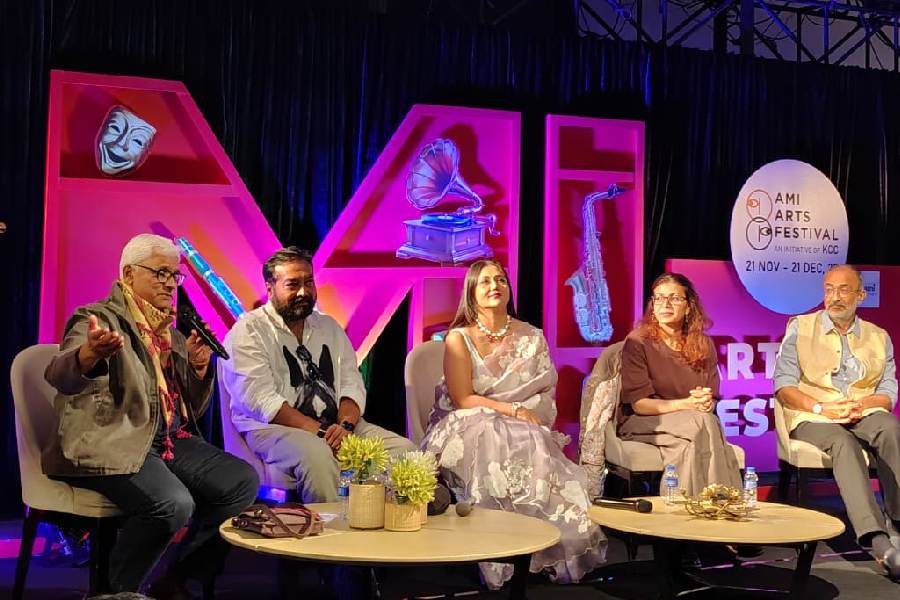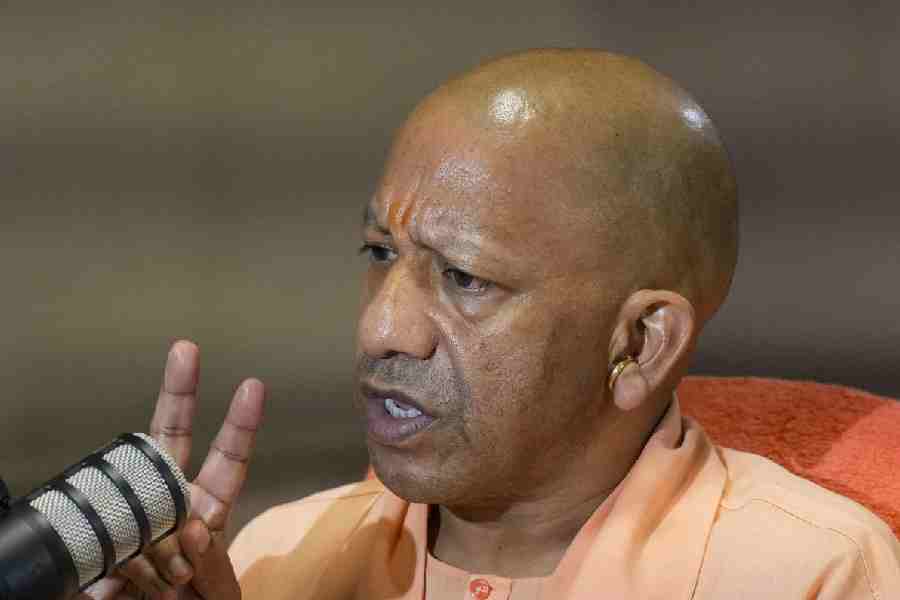 |
The audience is spellbound, but the veteran dancer on the stage — who makes a brief appearance at the end of the show featuring her troupe — is nervous. For sitting right in the front row is her uncle by marriage, the sitar maestro Ravi Shankar.
“I was a nervous wreck,” 55-year-old Tanusree Shankar admits. “I couldn’t see anyone in the audience except him. I was anxious, hoping that kaka would like it,” Shankar says the next morning as we meet over breakfast at a five-star hotel in Connaught Place. The show in Delhi, where she was performing after 13 years, is now behind her, and Shankar — in a black woollen kurta and a pair of black tights — looks visibly relaxed.
Does she still feel nervous, after all these years, and despite her stature? “Of course,” she replies, spooning cornflakes into a bowl. “Every performance is like a new exam — the anxiety always remains.”
She recalls that when she choreographed her first major performance, she felt as if she was sitting for the Indian Administrative Services’ entrance exams. The Pacific Asia Travel Association was holding an annual conference in 1978 in New Delhi. She and her husband — the late Ananda Shankar, a composer known for his fusion of Western and Eastern musical styles — were to give their first ever performance together.
“Being from the Shankar clan, my biggest concern was to match the level the others in the family had achieved,” she says.
Thankfully for her, the conference was a success. And it was the trigger for Shankar to start experimentation with “New Dance” — the pioneering form introduced by dancer-choreographer Uday Shankar — her late father-in-law.
Shankar’s craft has been highly influenced by him. “His creativity knew no bounds. He was always ahead of his time. He was a painter and a musician besides being a performer. And he had fabulous showmanship.”
I ask about Uday Shankar’s relationship with his French dancer partner Simkie — about which there was much speculation decades ago. Not surprisingly, it’s not a subject that the daughter-in-law would like to discuss.
“Such relationships are beautiful. One should not look beyond the brilliant chemistry that the two artistes created on stage,” she says.
She would rather recall the advice that he gave his son from his hospital bed before his death in 1977. “He said: Give the audience something even before they know they want it,” she says.
That’s what the husband-and-wife duo tried to do for many years. “Uday Shankar was like a banyan tree. We are his branches. The onus was on us to carry on with his legacy.”
Tanusree Shankar’s dances are mostly based on music composed by her husband. The two performed together in 40 countries before his death in 1999. But Tanusree discloses that she was never ambitious and it was Ananda who persuaded her to take up dancing as a career.
“I was happy to be a housewife. He used to tell me that I didn’t have the fire. In fact, it is he who kindled the fire in me,” she says with a smile.
They met when Ananda had already hit fame with his 1970 album Ananda Shankar. After Tanusree’s father, Tushar Kanti Ghosh Choudhury, a doctor in the armed forces, was posted to Calcutta, she joined Amala Shankar’s dance school, started by Uday Shankar’s dancer wife. And that was when Ananda spotted her in the crowd of wannabe dancers.
“I was only 13 and he was already 26 when he proposed marriage to me. But my father urged me to finish schooling before getting married,” says Shankar, who dated Ananda for four years.
But dating wasn’t that easy for a school-going girl in the Seventies. And dating a celebrity was even more difficult, she adds. Classes in her South Point School started late, so Ananda used to pick her up from a bus stop close to her house at 8am. “But every time we bumped into someone known to him, I had to hide beneath the seat of the car so that nobody could see me. It was more stress than fun,” she laughs.
But after the two were married, the teen bride realised adjusting to this new family was not going to be easy. “I came from an extremely disciplined family where everything was done in a specified time in contrast to the Shankar family, which was a bohemian household,” she says.
Gradually, she put everything in order. “Once, when everyone was away from Calcutta for a show, I sold off all the unnecessary stuff lying in the house for Rs 2,000 and used the money for buying new curtains, cushions and a tea set. I revamped the house — and everyone was pleasantly surprised,” she recalls.
Apart from her interests in household chores, Shankar also got fully involved in dance under the guidance of Ananda. “He was a tyrant as far as perfection and discipline were concerned,” says Shankar, who earned fame as the leading dancer in the Ananda Shankar Centre for Performing Arts before setting up the Tanusree Shankar Dance Company in 2002.
It was again Ananda who coaxed her to get into films. Shankar was the lead actress in Swati, the cinematic adaptation of author Manik Bandopadhyay’s Neki. The film was a roaring success — and it led to numerous offers. She also shared screen space with the celebrated actor Uttam Kumar in Piyush Bose’s Dui Prithibi.
“After every shot, Uttamda would say, ‘Tanu ke cha khawaao (Get Tanu a cup of tea),” Shankar remembers.
In the Eighties, she even did an “item number” in Aagun. “The dance steps were flippant. I just tried to be spontaneous throughout,” she says.
Shankar acted with Soumitra Chatterjee in Hemanter Pakhi, a 2003 release. “Soumitrada made me feel so comfortable.”
Then came Mira Nair’s The Namesake based on Jhumpa Lahiri’s book. “It just fell into my lap,” says Shankar.
I liked the book more than the film, I venture bravely. She admits that the film had some flaws. “The newborn Gogol (the protagonist), for instance, was too big for a newborn. I told Mira about it later.”
Shankar also figured in another international film — Waiting City. In the past one decade, she has acted in quite a few Bengali films including Ballygunge Court, Ekti Tarar Khonje and the recently released Aparajita Tumi.
Shankar had stopped acting when she was expecting her daughter, Sreenanda, in 1980. Sreenanda has been trying for a role in Bollywood, after finishing a course in Roshan Taneja’s acting school, but is yet to get a break. “She now wants to be a choreographer like me,” the mother reveals.
Clearly, Tanusree continues to inspire. Her production Uddharan — a 30-minute musical play which has actor Amitabh Bachchan as its narrator — won the best production award from the West Bengal government in 2002. Her other acclaimed work is an Indo-French ballet called Padmavati, based on the life of Padmini of Chittorgarh, and directed by filmmaker Sanjay Leela Bhansali. The production had over 100 international artistes apart from the 26 dancers from her troupe. In 2008, the opera opened in the prestigious Théâtre du Châtele in Paris and then in Spoleto, Italy.
“It was a grand affair. Traditional Indian dances such as Bharatanatyam and Thang ta (Manipuri sword dance) were blended with ballet,” she says, moving her fingers like dance mudras.
She has performed in many illustrious venues — such as the Carnegie Hall in New York, the Kennedy Center in Washington and the Queen Elizabeth Hall in London. She finds it is easier to break through a Western audience. “Our Indian audience is very unpredictable,” she says.
Shankar takes a minute to speak with her mother, who’s called up to ask about her. Rina Ghosh Choudhury has been living with her daughter in her Palm Avenue residence after her husband’s death in 1985. Her mother’s been “all the more protective” of her after Ananda’s sudden cardiac arrest. “Without Ma being around, it would have been difficult to manage work and home alone,” she says.
The time after Ananda’s death was the toughest phase of her life, she recalls. “After him, I didn’t have the confidence to do anything alone. But God gave me the extra strength,” she says.
Energetic as always, Shankar is a workaholic. And she has no desire to attach herself to any party in West Bengal — as many artistes in the state tend to do — for patronage or prominence. Art, Shankar stresses, is beyond politics. “I believe in what my father once said — ‘If you want something, don’t ask for it. It will come to you,’” she says.










